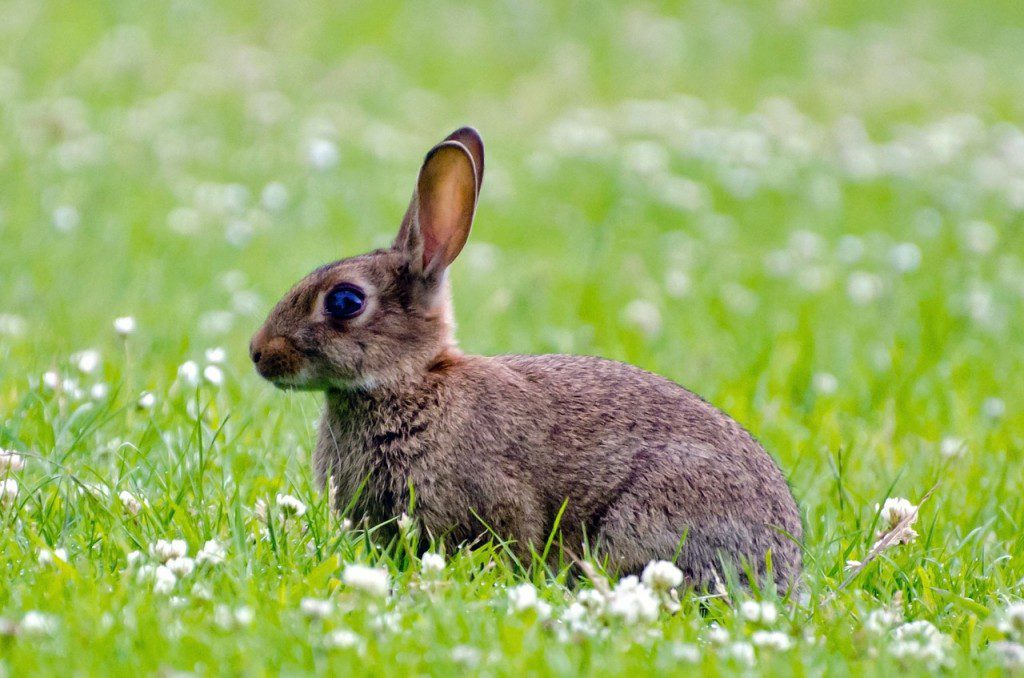By Tracy Brighten
Children in Central Otago see a dark side to the Easter bunny
Easter is a time for celebration, whether it’s the Christian celebration of resurrection, or the Pagan celebration of fertility, symbolised in community Easter egg hunts and the Easter bunny.
What you wouldn’t expect is a family bunny hunt involving the slaughter of 10,000 rabbits. But that’s what happens every year in the Central Otago region of New Zealand’s South Island. The Great Easter Bunny Hunt seems to be a celebration of killing.
The official aim is to purge farmers’ land of rabbits. An introduced species, rabbits are notoriously fast breeders and cause widespread damage. The cull is promoted to hunters as a chance to access land usually off limits to the public, including areas filmed in the Lord of the Rings trilogy.
Pest control becomes hunting competition
But the event is also a competition. Instead of a carefully managed cull carried out with professionalism and respect, it’s a parade of prowess. The event raises money for charity with teams paying a participation fee, but the main driver for hunters is target practice and pleasure.
Teams from all over New Zealand compete for the title of champion rabbit slayers. Hunt convener Dave Ramsey said he was happy with this year’s ‘dispatch’.
“Hunters killed a total of 9680 rabbits, up on last year’s haul of 8439. Shooters also dispatched 331 hares, as well as some possums, turkeys, stoats, goats, pigs and magpies.”
Hunting is promoted as an effective way to control rabbit populations. “The bunnies cause massive land erosion… and hunting is the most effective and efficient way of controlling it,” event organiser Eugene Ferreira told the Guardian.
But Dave Ramsey admitted the event didn’t have a significant impact on overall populations. It was more about fun and education.
Fun factor drives hunters
The education angle is hard to detect, but the fun aspect is clear. Aidan Wilson, captain of team Overkill and a regular competitor, expresses his delight at the scale of the hunt.
“I just love it – purely for the numbers. It’s not just one shot here and there, there are a lot of targets and it is a lot of fun.”
The event has even attracted foreign hunters, deprived of bunny killing contests at home. Harry Stenton from Yorkshire, England, joined the 2015 hunt, applauding New Zealanders’ acceptance of hunting as a sport.
”If you tried something on this scale back home, with dead rabbits displayed in the park afterwards, you’d have masses of protesters.”
Ramsey said some hunters were disappointed with their tally this year. Previous years have seen as many as 23,000 bunnies blasted in target practise.
Rabbit haul laid out for contest count up
After the 24 hour killing spree, rabbits are laid out in the local park for counting. Row upon row of carcasses are on display, children wandering past the carnage as hunters take selfies. The rabbits aren’t used for food, but disposed of in a pit.
Making it a family day out seems to be an attempt by hunters to normalise their lust for killing, but this public celebration shows a lack of respect and compassion for wildlife. The rabbit is a pest, but it’s also a sentient being. Any hunter, regardless of competence, can take part in the hunt, exposing rabbits to a slow and painful death.
SAFE director Hans Kriek objects to the disregard for animal welfare with “inexperienced hunters blasting away at animals. The ones they kill are one thing, the ones they injure are another.”
Animals deemed to be a pest can be dealt with in a professional manner and without involving children. Children are highly impressionable, and adults, parents in particular, are their early role models. Killing animals has no place in childhood if we want a more compassionate society.
Image credit:
Wild rabbit via Pixabay
Chocolate rabbits via Pixabay
